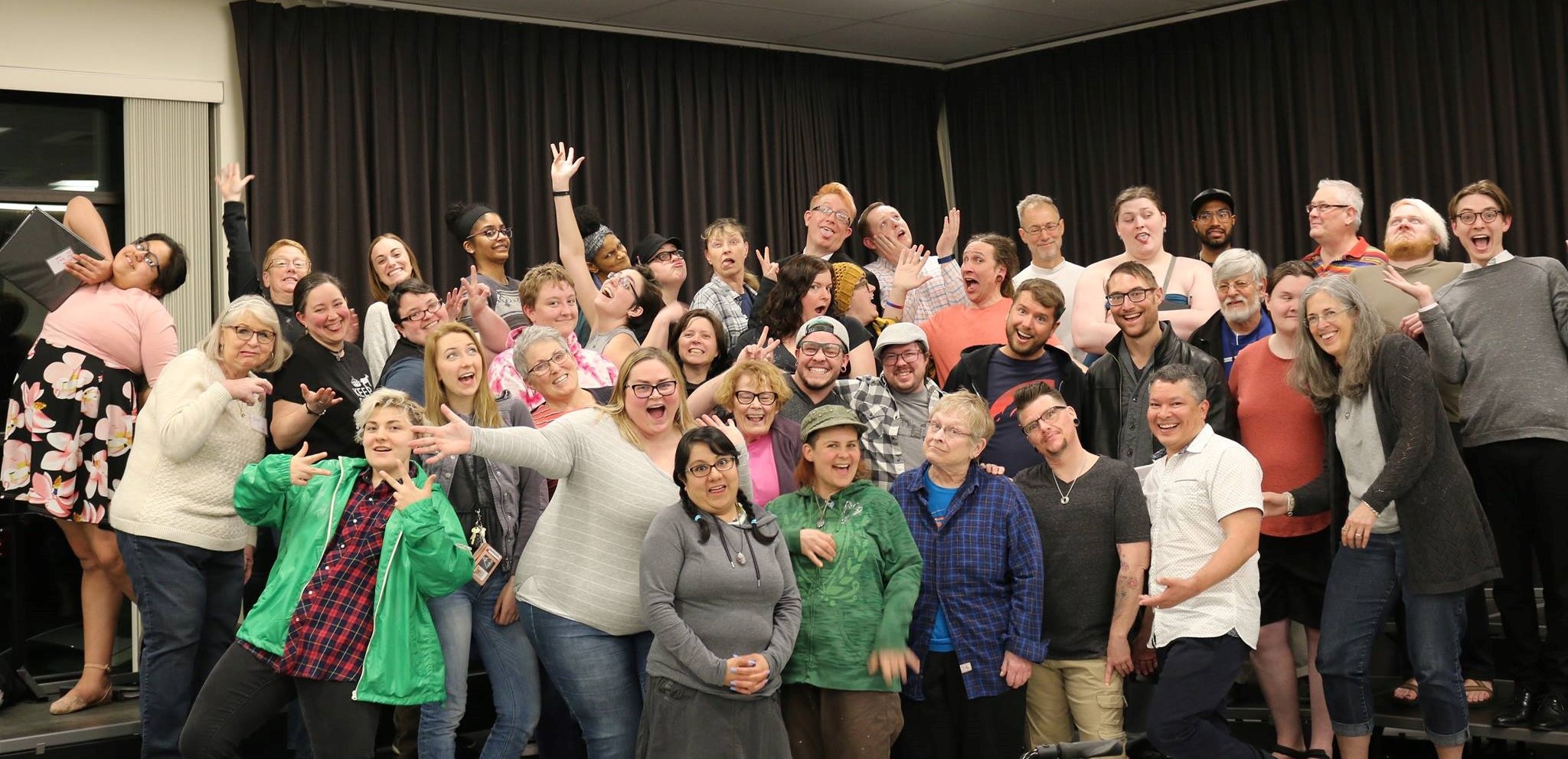Do you ever worry about the interpersonal dynamics in your choir? Do you ever get frustrated with an individual singer’s behavior? Do members ever become emotional and you worry if they are ok? Or maybe you have a board member that is consistently late to meetings or does not accomplish the tasks they said they would do. Do you have members who seem to be in a sort of power struggle with certain other members? If any of these happen in your choir, which I’m sure something like them do, there is a good chance that mental health or psychological ability may be contributing to your concerns and to the dynamics between singers, staff, board members, and the community.
As the founding Board President of a new GALA chorus that focuses on diversity, inclusion, and social justice, a number of situations have occurred in our membership and leadership that created some tension, and could have escalated into divisive conflicts. I have found myself very thankful to have a background as a psychologist specializing in mental health and cultural diversity. This has helped me to relatively gracefully maneuver through some of these challenges without too much instability. It requires considerably more work to be this attentive to everyone’s needs, but being willing to do the work that it takes to be culturally competent with ALL of our diversity is part of what equity, access, and belonging is all about.
Mental health and psychological functioning are always at work in our minds, personalities, and relationships, but they are rarely intentionally addressed, especially in group settings. Despite our tendency to ignore these factors, many behavioral challenges and relationship conflicts are rooted in differences in our mental and psychological abilities. In any group of people, especially in the diversity of GALA choirs, there will be a large amount of variability in mental health and emotional and cognitive ability. In LGBTQ+ populations, there is a much higher rate of trauma histories and mood disorders, and in Transgender and Gender Variant populations, there is also a significantly higher rate of being on the autism spectrum. In reality, any minority group experiences minority stress which adds to their stress in life, and makes them more vulnerable to mental health challenges. All ofthese factors can have a tremendous affect on emotional regulation, and increase the likelihood of depression, anxiety, PTSD, personality disorders, substance use, and relationship conflicts.
One of the greatest challenges regarding mental health and psychological functioning is that they are frequently invisible and misunderstood. Dyslexia, ADHD, Autism spectrum disorders, mood disorders, etc. cannot always be easily seen. Instead of trying to understand these minority groups, the majority of people assume that everyone else is like them, neurotypical, with somewhat average intellectual abilities, and perfectly capable of overcoming emotional situations without too much trouble. These assumptions mean that society, and our choirs, naturally fall into a position where the statistical majority gets their needs met and feel welcome, but where people in the minority are left without the resources that they need to succeed and excel. By not being intentional about recognizing and attending to this in our choirs, and in our communities, we unintentionally keep people and marginalize many of our members. This can lead to members not feeling welcome and create an experience that adds stress instead of relieves it. Ignoring these factors can also lead to significant tension in the group, and sometimes create irreparable conflict and deep rifts in our community.
To begin to understand psychological diversity, I want to provide just one example: attention. There are a number of types of attention that affect our intellectual abilities, emotions, and behavior. When a person has lower levels of attention, it can significantly impact a number of aspects of their life in a world that tends to expect and require a high level of attention. A person with lower than average levels of attention will be more likely to: lose track of time, misplace objects (like sheet music or phones), be more comfortable moving around than sitting still, be more likely to talk out of turn, and have difficulty switching tasks (like moving to the next song). In choir, this might be evidenced by a choir members that is always arriving late, or they forget their music, or leave their belongings behind at a venue. In board members, a person might forget what night board meetings are on, even when they’ve been on the same night every month for years, or have a very difficult time keeping with the agenda or staying on task. These kinds of behaviors are perfectly within in the range of human abilities, and can actually be beneficial in certain contexts, but they tend to not work smoothly with a fairly structured organization that expects people to arrive on time, attend regularly, and have the ability to sit for long periods of time and stay on task.

When someone acts in a way that does not fit with the majority culture (in this case, of average attentional abilities), their actions tend to stand out. These actions can be distracting, and take considerable time and energy to attend to. Directors or leaders can interpret this behavior as problematic and can easily become frustrated. People can begin to think of a person with lower attentional abilities as immature, uncaring, irresponsible, or not “on board” with the mission of the choir. In reality, it is also quite possible that these individuals are trying very hard, are some of the most passionate about the mission, and have the best intentions, but that their attention difficulties make it nearly impossible to accomplish these tasks in the same way as others with higher levels of attention. It is possible to problem solve ways for both the group and the individual to adjust to make a more successful experience for all (suggestions will be in a later publication), but we typically don’t ever get to the point of listening and problem solving. It is much more common that people begin to make assumptions, blame others, get frustrated, fail to empathize, and then have emotional reactions and divisive conflicts. We must understand that people with lower than average attentional abilities are just as important in our choirs and in the world as those with average or higher abilities. We must have choirs where the diversity of attention is accepted and embraced.
Specifically regarding attention, some ways to help might include:
- Notice what is happening and try to see the situation from every possible angle.
- Speak with specific individuals and learn what has been the most helpful for them in the past.
- If appropriate, seat individuals with lower levels of attention at the end of a row, so they can get up and down, or arrive late, without causing disruption OR have the type of rehearsal where there can be lots of getting up and down and it doesn’t really matter.
- sending reminder emails or even personal phone calls to specific individuals.
- providing a more specific structure with a written schedule regarding when you will be doing what (when will the break be, what songs will we be singing today, what time is the concert this weekend, etc.) OR alternatively, loosening the structure so much that it does not particularly affect anything if things are out of order or if questions have to be answered over and over again.
- provide structures that help a person focus, such as pairing them with a specific peer to answer questions like “what measure are we on? What did the director just say?”. This person can sit next to them and help them stay on task, or answer questions as they arise.
- providing written instructions about everything: scheduling, attire, contact information, sometimes even the director’s musical notes.
- consult with professionals when necessary in a way that is confidential and with the utmost respect and dignity for everyone involved. Consult with counselors/psychologists, other choir directors and educators who are not connected with the choir. Do not brainstorm too much with other choir members, as this can easily become biased and “gossipy.”
In a future article, I will include a number of detailed examples of other aspects of mental health and psychological diversity that are likely to affect our GALA choirs and a general model for how to proactively attend to this diversity and competently react to situations when they arise. In addition, myself and a number of others are working on writing a Mental Health chapter of to be added to the New Harmony Workbook. Until then, here are some general guidelines that apply to all matters of psychological and mental health diversity:
- Take a deep breath, and help the entire system relax. When leaders can help the system stay calm, it allows for the system to adjust with much less conflict.
- Take the perspective of listener and learner. Listen to the various needs in your community and the ways that your group could anticipate these needs. Read books and consult with professionals to begin to understand what it would be like to be a member of one of these diverse groups. Some of the most common online resources are www.nami.org and www.psychologytoday.com
- Address any current issues/needs AND look ahead toward any possible need that will likely come up in the future. Be proactive in creating inclusive atmospheres.
- Lead and take action: Listen to the various needs of the group, learn about the mental health diversity, and work together towards solutions.
Remember that it is important to start from a perspective of humility, compassion, and social justice, in our efforts to create true equity, access, and belonging. We must not make assumptions about the reasons people act the way they do. Instead, we must pay attention and attempt to understand as best we can; we might not understand everything about these aspects of diversity, but we can certainly understand some of the feelings related to being in a minority group, to be ignored, teased, marginalized, and discriminated against. We must notice our own feelings, but also realize that those feelings are self-protective, and might not provide accurate information about what is actually going on in others. We must do all that we can to ease the tension and to de-escalate anxieties by providing a stable and caring atmosphere. We must recognize that whatever is happening is not because there is a problem with the individual who people have identified as the problem. Instead, there is something in the system that hasn’t been able to adjust sufficiently. Let’s all work together for the inclusion of all!
Stay tuned for more examples of mental health and psychological diversity and ways to embrace all of this diversity in our choirs. If you would like to talk about any specific challenges in your choir, please feel free to contact me, Bobby Kizer, at kizer.bobby@gmail.com and I will try to help or point you in the right direction.




